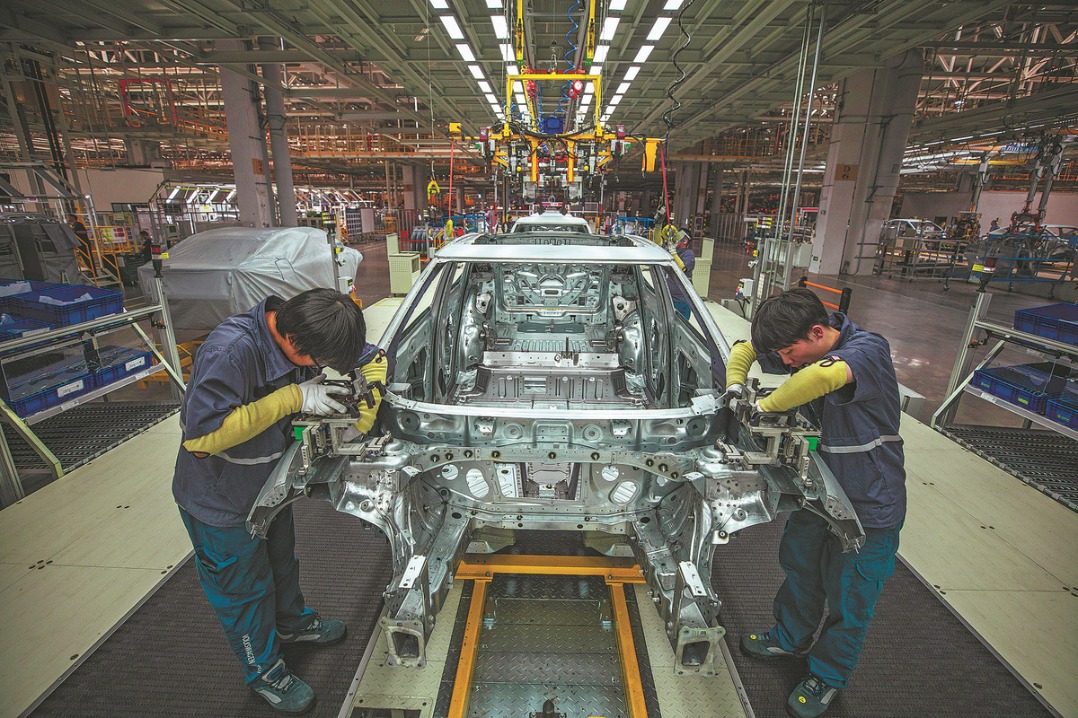New era for finance
Further development of the financial market and deepening financial reform necessary to support common prosperity


What can the financial sector do to support common prosperity? Three areas are worthy of attention: deepening financial reforms to effectively support high-quality development; promoting financial marketization to achieve market-based decisions on factor prices; and using digital technology to develop financial inclusion.
First, we need to effectively support high-quality economic development by deepening financial reforms. Development Economics holds the belief that "economic development is the most effective anti-poverty device". In fact, the most effective antipoverty method for a country is to develop its economy rapidly. This has been proved by the rapid economic development of the 40 years of reform and opening-up in China.
China initiated its reform and opening-up in 1978, making massive efforts to establish a huge financial system. Since then, China has witnessed rapid economic growth and relatively stable financial development with the average growth rate of China's GDP reaching 9 percent from 1979 to 2018. There have emerged some risk factors in the financial system, but no systemic financial crisis occurred. A number of famous economists have commented that China's economic reforms are generally very successful, when there are great contributions of finance.
The ultimate goal of China's financial reform is to support sustainable economic growth, which is a fundamental prerequisite for achieving common prosperity. Timely financial reforms will be essential to achieve sustainable economic growth and common prosperity.
Before the 2008 global financial crisis, China's incremental capital output rate, which indicates the additional unit of capital needed to produce an additional unit of output, was about 3.5. From 2008 to 2017, this indicator has nearly doubled. That means the additional capital or investment needed to produce the same unit of GDP has nearly doubled, suggesting a decline in China's financial efficiency, a possible fallout of weakening financial support for the real economy.
If this is not resolved, sustainable economic growth will become empty rhetoric; and if the economy cannot achieve sustainable growth, common prosperity will be unattainable.
China has grown from a low-and-middle-income country to an upper-middle-income country, and will soon enter the ranks of high-income countries. It is thus moving from an extensive and factor-input economic growth model to an intensive and innovation-driven one.
Accordingly, the change to the economic growth pattern requires deepening financial reforms. Therefore, commercial banks, which supported extensive economic activities in the past, will now support more innovation. For example, we need to better assess the risks and rewards of innovation by employing digital tools.
Second, to realize common prosperity, it is also important to further promote financial marketization to achieve market-based factor prices. Currently, in China, income ratio of residents is relatively low, and income distribution is unequal. Labor remuneration only accounts for 47.5 percent of China's GDP, while it is 53.6 percent in the United States. This is because China's financial marketization is not high enough, and financial factors do not really gain market returns that match the risks. Therefore, further promotion of market-based financial reforms should be conducive to increasing financial returns, especially the ratio of residents' investment income.
A large proportion of residents' savings are deposited in banks with very low interest rates. Thus both their current and fixed incomes are not high. If the marketization of interest rates could be fully realized and deposit interest rates rise, the gains for residents who hold a lot of deposits would increase, which could help to improve income distribution.
More important though, the real investment channel should be the capital market. Not only must the problem of market-based interest rates be solved, but also the capital market must be improved and the proportion of direct financing increased.
Third, financial inclusion needs to be increased by employing digital technology, which may also help to achieve the goal of common prosperity. It is necessary to provide better financial services for some disadvantaged groups, including low-income groups, small, medium and micro enterprises and rural residents. Digital financial inclusion should particularly strive to solve the difficulties in financing, investment and insurance.
China's digital finance has solved the difficulty in payment with tools such as Alipay and WeChat Pay connecting farmers with external markets. The popularization of online sales channels has largely expanded their career choices and increased their incomes.
In response to the financing difficulties smaller companies face, some big tech platforms manage credit risks and provide "big tech credit", effectively supporting the development of small, medium and micro enterprises. This is conducive to improving income distribution and promoting common prosperity.
Residents who do not know how and where to invest should be offered guidance, possibly through digital tools such as roboadvisers. Specifically, we need to help families have regular income with financial management. This will help increase the ratio of residents' property income.
In addition, insurance is also an important way to provide security for residents, while financial inclusion will also play a role in overcoming the difficulty in insurance.
The author is deputy dean of the National School of Development at Peking University and director of the Institute of Digital Finance at Peking University. The author contributed this article to China Watch, a think tank powered by China Daily.
The views do not necessarily reflect those of China Daily.
Contact the editor at editor@chinawatch.cn
































